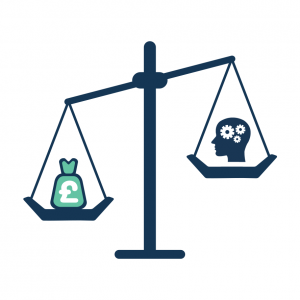 Today, eLearning has evolved into a remarkably efficient and sophisticated form of training delivery. Yet it’s often difficult to quantify this benefit in monetary terms.
Today, eLearning has evolved into a remarkably efficient and sophisticated form of training delivery. Yet it’s often difficult to quantify this benefit in monetary terms.
For those struggling to formalise their eLearning ROI calculations, Donald Kirkpatrick’s 1976 training evaluation process may be able to help.
This divides the evaluation process into four levels: Reaction, Learning, Behavioural Impact and Results.
Analysing all four levels can help you apply a monetary value to the efficiency of your training campaign and deduce your return on investment (ROI).
 Reaction refers to the response from those who took the eLearning. Was the learning experience a positive one? Are they awaiting their next online learning session with baited breath? Have any issues or concerns risen to the surface? Was the programme as a whole embraced?
Reaction refers to the response from those who took the eLearning. Was the learning experience a positive one? Are they awaiting their next online learning session with baited breath? Have any issues or concerns risen to the surface? Was the programme as a whole embraced?
Analysis of this feedback can tell you the levels of eLearning acceptance among your workforce, and whether they thought the content was relevant to their job. However, it’s can’t tell you whether the training actually worked – that’s the job of the next level.
 The Learning level of evaluation is relatively self-explanatory. Comparing pre- and post-test assessments shows you the clear positive development path of your workforce. It can also help you to determine whether your employees have picked up the knowledge or skills that the training was supposed to communicate.
The Learning level of evaluation is relatively self-explanatory. Comparing pre- and post-test assessments shows you the clear positive development path of your workforce. It can also help you to determine whether your employees have picked up the knowledge or skills that the training was supposed to communicate.
Unfortunately, there are obvious limitations here. You can only see a snapshot of the current developmental state of the workforce, and there’s no way of knowing whether the training has inspired users to continue their progression on the job or whether the learning process will trail off once training is complete.
That’s why it’s important to also monitor Behavioural change following training. In most cases, once the learner is released back into their work environment, the evaluation is complete. Did they improve: yes/no? But there’s more to it than that. If you want to determine a training programme’s ROI accurately, then it’s important that precise behavioural data is supplied and then qualified in monetary terms.
Has your workforce adopted a new skillset and are they utilising it at the right moments? Are they responding to scenarios and situations in the manner the training suggested? This kind of data can be collated through observation, interview and follow-up assessments. Of course, it is then up to you to boil this data down into monetary terms that can be fed into your ROI calculation.
Finally, we reach the Results strand of the evaluation process. This seeks to establish the level of improvement that training has engendered throughout the organisation. Did the training result in organisational growth? Did sales improve? Has attrition decreased? Are employees more successful?
When calculating the ROI on an eLearning training programme you have to balance all these different levels of evaluation.








